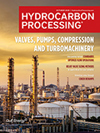Environment & Safety
Wärtsilä supplies battery to Pivot Power as part of cutting-edge Energy Superhub Oxford project
The hybrid battery system, which was officially launched at the opening of Energy Superhub Oxford (ESO), will play an essential role in the UK’s shift to renewables.
The downstream rundown: In case you missed it 7/1
In case you missed any downstream news, this piece will give you a summary of some of the top stories from last week.
Victor and Neste announce partnership to reduce private jet charter emissions by up to 80%
Neste and Fly Victor, the on-demand private jet company, announce a partnership which sets a new sustainability benchmark in business aviation.
Neste invests in its world scale renewable products refinery in Rotterdam
Neste has made the final investment decision to invest into new renewable products production capacity in Rotterdam. The decision is based on demand for renewable products growing substantially with customers' higher climate ambitions.
Novoshakhtinsk refinery resumes operations after fire
The Novoshakhtinsk oil refinery in the south of Russia resumed operations after a fire caused by a drone attack on June 22.
VTT and Neste to build an integrated e-fuels demonstration facility for CO2 capture, green hydrogen and e-fuels production
Power-to-Liquids technologies are on their way to commercialization in scale. E-fuels offer a way to expand the carbon-neutral transport fuel pool beyond biomass-based renewable fuels to replace fossil fuels in existing internal combustion engines.
First flight in history with 100% sustainable aviation fuel on a regional commercial aircraft
Regional aircraft manufacturer ATR, Swedish airline Braathens Regional Airlines and sustainable aviation fuel (SAF) supplier Neste collaborated to enable the first ever 100% SAF-powered test flight on a commercial regional aircraft.
ESL Shipping becomes the first shipping company in the world to utilize Neste’s co-processed marine fuel for GHG emissions reduction
Finnish shipping company ESL Shipping will become the world's first shipping company to start utilizing new low-emission Neste Marine 0.1 Co-processed marine fuel in its vessels in Finland and Sweden.
The downstream rundown: In case you missed it 6/17
In case you missed any downstream news, this piece will give you a summary of some of the top stories from last week.
Topsoe Technology to reduce customers’ greenhouse gas emissions by 12 MMt in 2022
Topsoe’s technologies are set to reduce its customers’ greenhouse gas emissions by 12 MMt in 2022 alone. These reductions will not be one-offs but ongoing for the years to come.

- Ducor Petrochemicals, Blue Circle Olefins partner to create a fully circular supply chain for polypropylene 11/18
- World's first: Air Liquide’s innovative technology converts ammonia into hydrogen at industrial scale 11/18
- Borouge to supply advanced polyolefin solutions for next-generation vehicles 11/18
- ASTM International signs MoU with Gulf Cooperation Council Laboratory Company for Technical Services (GCC Lab TSCo.) 11/18
- KBC launches Visual MESA Energy Management System 7.3 11/18
- MHI Compressor secures steam turbine contract at Baton Rouge (U.S.) olefins plant 11/18




